Brassica oleracea var. capitata
Cabbage is one of my all-time favorite cool weather crops to grow in my garden.
What is not to love about cabbage? Vibrantly colored, packed with nutrients, and quick to mature, these crunchy garden giants are a timeless classic that never seem to get old.
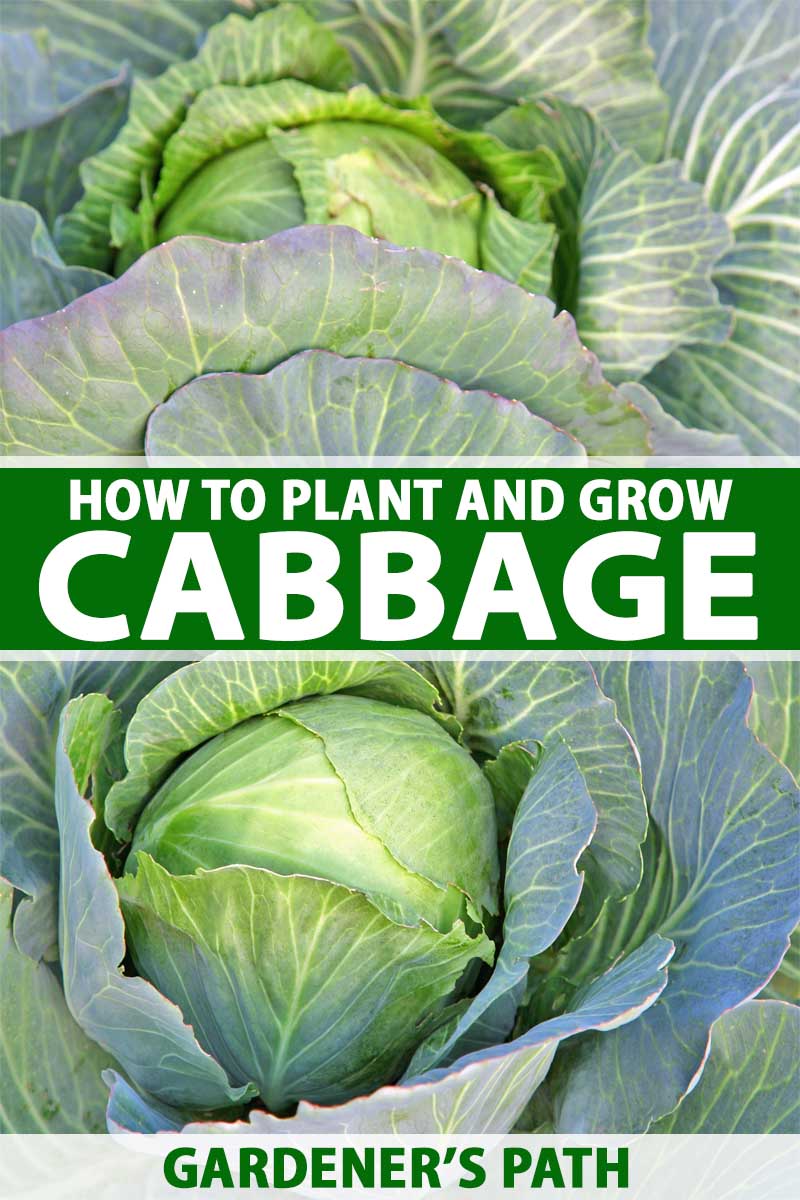
We link to vendors to help you find relevant products. If you buy from one of our links, we may earn a commission.
I enjoy eating them raw in salads or cooked in stir fries, and I especially love them fermented as sauerkraut.
What You’ll Learn
Cultivation and History
Cabbage is a cultivar of Brassica oleracea and is the same species but a different cultivar of other popular cole crops such as cauliflower, broccoli, and kale.
Heading cabbage has been a part of the human culinary story for a very long time and was likely domesticated sometime around 1000 BC where it was developed from wild cabbage (Brassica oleracea var. oleracea) which is found along the limestone cliffs of western Europe.
Cabbages became a significant part of the European diet by the middle ages. In Rome, it was a highly regarded vegetable considered something of an indulgence and was often used medicinally.
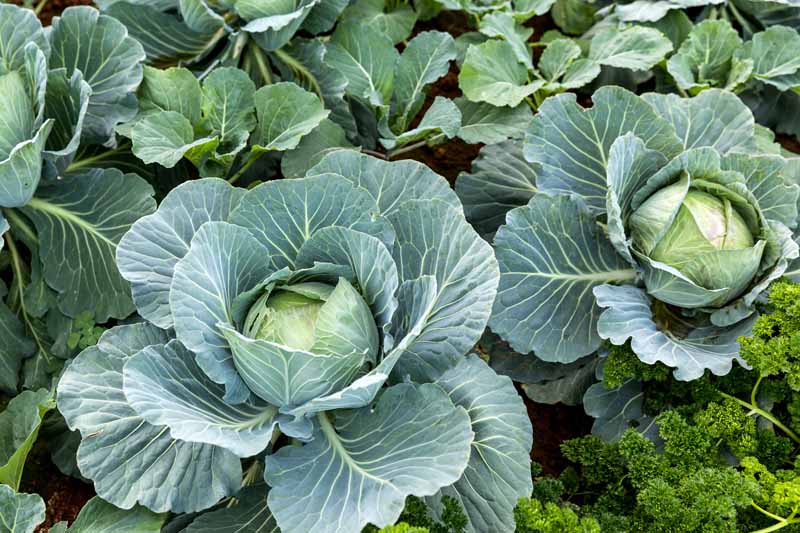
Around the same time, the Chinese and other Asian peoples developed their own versions from related brassica species which evolved into the Napa cabage (Brassica rapa subsp. pekinensis) as well as bok choy (Brassica rapa subsp. chinensis).
Later they developed their own Brassica oleracea cultivar called Gai lan or Chinese broccoli (Brassica oleracea var. alboglabra).
The vegetable came to the Americas by sea in the 1500s. It had become a staple on sea voyages because it was easy to preserve, and its high concentration of vitamin C helped prevent scurvy on long journeys. Sauerkraut was used to prevent gangrene and treat wounds.
Later, other cultivars of Brassica oleracea were developed into the red cabbage (Brassica oleracea var. capitata f. rubra) and savoy (Brassica oleracea var. capitata f. sabauda).
These days, cabbages are a mainstay in culinary traditions around the globe.
From sauerkraut, to coleslaw, cabbage rolls, and golabki, a Polish dish made with boiled cabbage leaves filled with minced beef or pork, onions, and rice, the variety of ways humans have devised to prepare and enjoy this staple crop are impressive.
This plant may look simple, but it has so much to offer! It is a no brainer in the garden, and luckily, it is a cinch to grow.
Propagation
You can choose to direct-sow in the garden or start your seeds indoors for later transplanting.
From Seedlings/Transplanting
Perhaps best grown from seedlings, start plants early in spring, about eight to 10 weeks before the last expected frost, so you can harvest before the summer gets too hot.
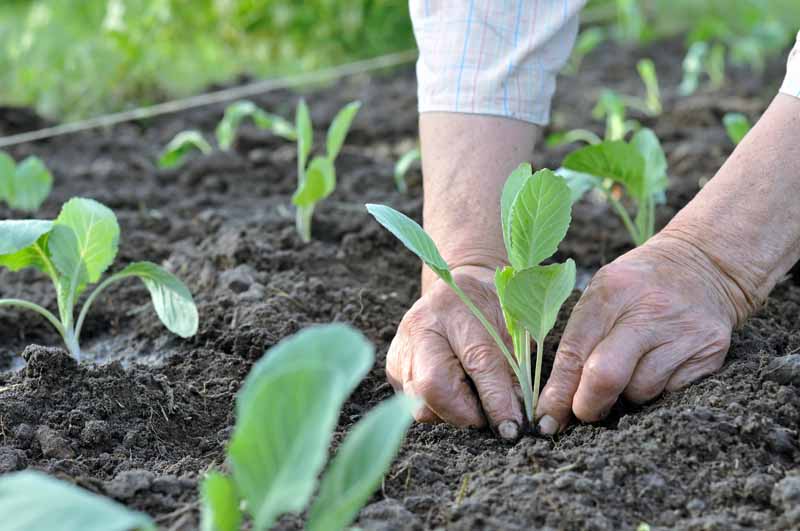
Transplant into the garden when plants are three to four inches tall, or two to four weeks before last frost, leaving 12 to 18 inches of space between each plant.
Don’t forget to harden off plants before transplanting!
For fall plantings, start seedlings in summer about 12 to 14 weeks before the first expected frost, transplanting into the garden when plants have reached four to six weeks of age.
Fall is a great time to grow cabbage, as these cold tolerant crops tend to improve in flavor after exposure to light frosts.
Cabbage should be planted in full sun, in well-draining soil amended with organic material.
From Seed
Seeds can also be sowed directly as soon as the soil can be worked in the spring.
It can also be seeded repeatedly throughout the season for a continual harvest, though plants may need additional care and protection to survive the heat of summer.
Check out our guide here to learn more about succession planting techniques.
Thin seedlings when they are about five inches tall.
How to Grow Cabbage Plants
Since cabbage are heavy feeders, it is important to incorporate plenty of aged manure or compost into the garden bed prior to planting.
Using a garden fork, mix in a few inches of compost or aged manure and water thoroughly before setting out seeds or transplants.
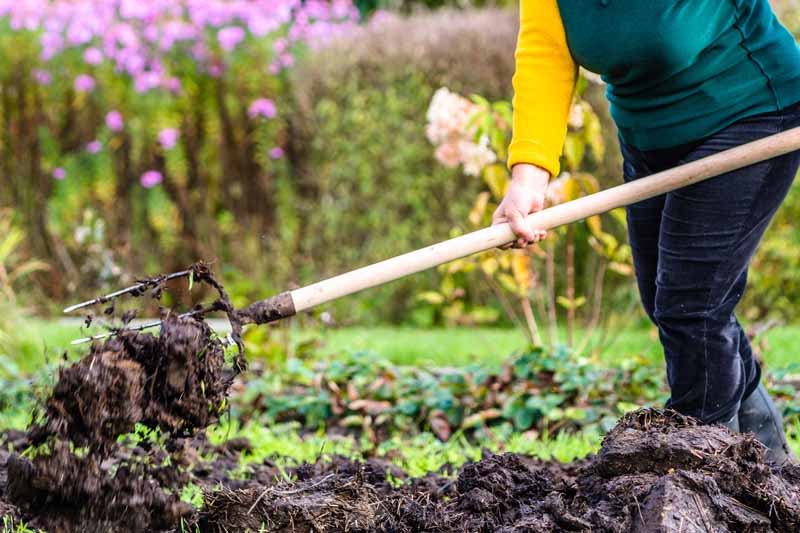
You can also try adding a nitrogen rich amendment such as blood meal to the soil.
It is also important to ensure an appropriate pH range, 6.5 to 6.8 is ideal. Keeping the soil pH above 6.8 will help prevent clubroot, a common cabbage disease that thrives in acidic soil.
Continue to provide nitrogen boosts to growing plants, especially as heads are beginning to form.
Side dress with compost every few weeks, use a liquid organic fertilizer, or apply a homemade liquid fertilizer such as comfrey tea, which is made from soaking comfrey leaves in water for a few days to draw out nutrients.
Don’t Let Them Split
One thing to watch for when growing cabbage is the splitting of heads, which can be caused by heavy rain, often following a bout of dry weather.
Splitting happens when the roots absorb too much water at one time and leaf tissue expands quickly. Unable to handle the pressure caused by a sudden increase in water, firm heads are split apart.
Splitting can also be caused by over fertilization of plants close to the end of the growing season.
To prevent splitting, keep plants well-watered. Be sure that the soil stays consistently moist, especially when harvest time is approaching.
Applying a thick mulch around the base of each plant will help regulate soil moisture.
As an added benefit, heavy mulching will also help build soil, prevent nutrient leaching, and help keep plants cool in the heat of summer. Mulching can also be use to protect plants in the late fall and winter.
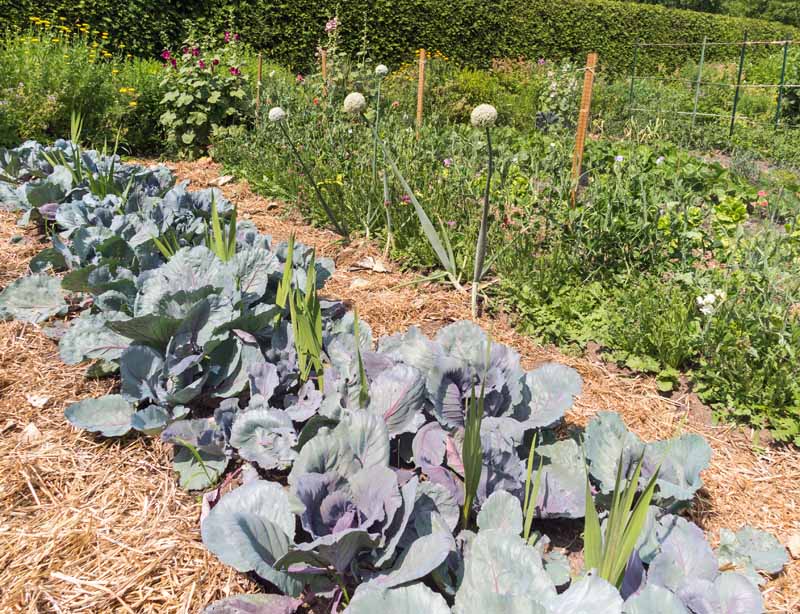
Root pruning is a technique that can help reduce the amount of moisture plants can absorb, preventing splitting. Prior to an expected heavy rainfall, twist plants gently or cut off a few roots using a sharp knife.
It is also a good idea to stop feeding plants once heads have started to firm up.
Growing Tips
Use shade covers in the heat of summer to keep young plants cool.
Use season extension tools such as row covers to get an early start in spring and/or keep plants growing later into the fall.
Always rotate crops to retain soil fertility and reduce risk of disease.
Cabbage does well when planted near aromatic herbs, which can help repel unwanted pests and improve the flavor of heads. Try planting near sage or rosemary to help deter cabbage moths.
Don’t plant cabbage near other brassicas, they will attract the same pests and diseases.
Avoid planting near strawberries, which can inhibit the growth of cabbage family plants. Similarly, planting near tomatoes can harm growth of tomato plants.
Cabbage Cultivars to Select
The following are a small selection of some of our favorite varieties.
Golden Acre
‘Golden Acre’ cabbage is a hardy heirloom variety that is resistant to yellowing diseases and can be grown in USDA Hardiness Zones 3 to 12.
It produces heads that five to seven inches in diameter and can be harvested 65 days after planting and can be sown directly into the dirt or started as seedlings.
‘Golden Acre’ is sweeter than most with a delicate flavor.
Find seeds at True Leaf Market.
Brunswick
Brunswick is a longtime favorite that produces large, bright green heads.
This heirloom is an extremely versatile variety that can be planted at any time throughout the season and needs 85 to 90 days to mature and produce a six to nine pound head.
Seeds can be purchased from Eden Brothers.
Early Jersey Wakefield
This is a cabbage with a pedigree. Early Jersey Wakefield has been a staple in North America since the 1840s.
This variety produces a seven-inch head weighing in at two to three pounds and is slightly coned shaped with a sweet flavor.
The beauty with this cultivar is that it reaches maturity in just 60 days from planting.
Managing Pests and Disease
There are a number of common pests and diseases that can affect cabbage plants. The following are some common problems to watch out for:
Pests
Cabbage Loopers
These very common and sneaky little pests can appear at any time during the growing season and can quickly munch their way through the leaves, leaving plants damaged and weak.

Because the caterpillars are green, they blend in easily with the plant and can be hard to see. The bigger they grow, the more damage they cause.
One larva can eat three times their body weight in one day!
Adults are gray-brown moths, which deposit small green eggs on plants that hatch as destructive larvae in only a few days. You can also look for small silky cocoons on stems or undersides of leaves.
Handpick loopers whenever you spot them.
Plant aromatic herbs that attract beneficial insect predators.
Floating row covers can help keep moths from landing on plants and laying eggs
Sprinkle food-grade diatomaceous earth on plants that are showing signs of infestation.
Make a homemade spray with garlic, cayenne pepper, and biodegradable dish soap and apply to the underside of leaves.
Flea Beetles
Flea beetles are small jumping insects that chew small holes in leaves. They overwinter in the soil and become active in spring when foliage begins to appear. Look for tiny white eggs around the base of plants or in the soil.

If an infestation becomes severe, they can destroy entire plants. They tend to feed on hot, sunny days.
Flea beetles can also transmit diseases to plants, so it is doubly important to keep infestations under control.
Floating row covers can be very effective when placed over young seedlings.
Diatomaceous earth sprinkled on plants can also kill flea beetles.
Neem oil, which is approved for organic use can also be sprayed on plants to kill beetles in all life stages.
Root Maggots
Root maggots are white legless critters that lay eggs at the base of young plants. The adult tiny grey flies lay eggs around the base of plants in the spring. The maggots feed underground on roots, causing rotting, and potentially plant death. Wilting leaves with occasional yellow or blue foliage can be signs of damage.
Tunnels created in roots by maggots can also harbor diseases such as black rot.
Cover with floating row covers as soon as seeds are sown or transplant sets in to reduce the risk of problems.
You can also apply paper or cardboard rings around the base of transplants to prevent flies from laying eggs around the stem.
Sticky traps placed around the garden can be effective traps for cabbage flies.
Practice crop rotation to reduce the risk of continued infestation.
Disease
Clubroot
This soil borne fungus can infect most brassicas including cabbage. It infects plants through root hairs, causing roots to become deformed and rot, and making nutrient and water absorption difficult.
Common signs include wilting in heat and yellowing or browning of leaves.
Spores can spread by water, wind, or tools, and can live in the soil for up to 10 years. Though disease can appear in many conditions, too much moisture and low soil pH may increase risk of infection.
There is not much you can do after plants have become infected, other than to remove infected plants and wash gardening tools after use.
Prevention is key. Choose resistant varieties, rotate crops, and apply lime to raise soil pH.
Blackleg
Another common brassica infecting fungus, this disease causes dark spots on stems and leaves. It can overwinter in soil, on plant debris, and live in seeds. It is common in warm and wet conditions but can appear at any time.
Avoid planting infected seeds, remove infected plants, and remove and destroy crop debris after harvest.
Black Rot
This bacterial disease that turns leaf veins dark and produces a foul smell. The pathogen can spread throughout the plant through the vascular system, and eventually cause leaves to wilt and die.

It is common in wet and warm conditions, and especially thrives in overcrowded garden beds.
Plant crops in a well-draining area to reduce risk. Practice crop rotation, avoid overwatering, and remove infected plants.
In general, the best practice is prevention. Choose disease resistant varities, rotate crops regularly, and remove all parts of cabbage plants from the garden after harvest to prevent diseases and pests from lingering in the soil.
Read more about black rot prevention and control.
And for more general information, please check our complete cabbage disease guide.
Harvesting Cabbage
Time to harvest can vary with variety and can range anywhere from two to five months from seeding.
Harvest cabbages when the heads are large and firm. Leave the wide outer leaves and cut the head out of the center with a sharp knife.
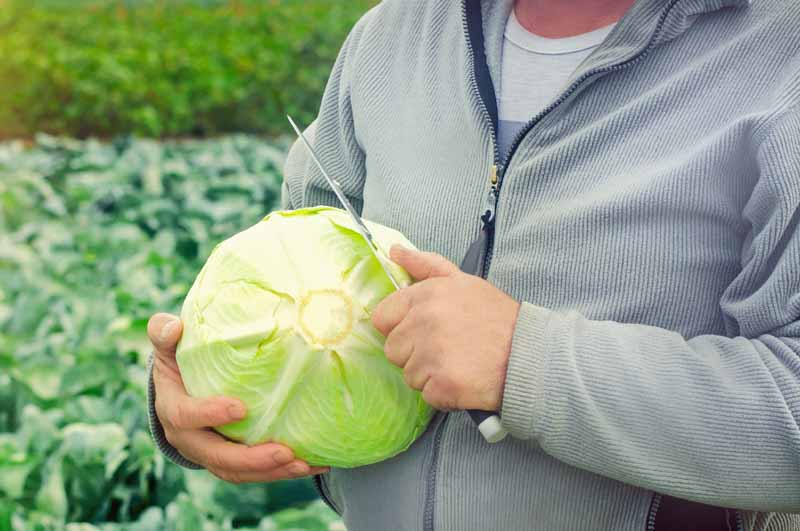
Move harvested plants into a shady location immediately or bring inside to avoid wilting.
It may be possible to get a second harvest of an early variety. If you leave the outer leaves and roots intact when doing the initial harvest, the plant will send up several new heads.
Pull some off, leaving a few smaller ones to harvest when they are about the size of a tennis ball.
Once you are finished harvesting, remove the entire plant to reduce the risk of disease. Compost healthy plants but destroy those that have become diseased or infested.
Preserving
When storing, keep all leaves on the heads to protect the inner layers and retain moisture and do not wash until ready to use. Cabbage should be stored in a cold, moist location, about 32 to 40°F.
In the refrigerator, a head can last from three weeks to two months. Store in plastic bags to retain moisture.
To store in the root cellar, place heads in rows with space between them, hang from string off the ceiling, or store individually on the floor wrapped in newspaper. stored in this way, cabbages can keep for up to four months.
Tip: if you harvest the full plant, store roots in root cellar through the winter, and replant them in spring after a thaw. they will produce small edible sprouts, and eventually go to seed which can be saved for the following years crop.
Heads can be chunked up or shredded and be frozen, or of course, my favorite, fermented into sauerkraut!
Quick Reference Growing Guide
| Plant Type: | Biennial grown as an annual | Water Needs: | 1.5 inches per week |
| Native to: | Europe | Maintenance: | Moderate |
| Hardiness (USDA Zone): | 1-10, depending on type | Soil Type: | Nutrient rich |
| Season: | Spring and fall | Soil pH: | 6.5-6.8 |
| Exposure: | Full sun | Soil Drainage: | Well-draining |
| Time to Maturity: | 30-60 days | Companion Planting: | Aromatic herbs, onions, garlic, beets, celery |
| Spacing: | 12-18 inches | Avoid Planting With: | Strawberries, tomatoes |
| Planting Depth: | 1/4-1/2 inch (seeds) | Family: | Brassicaceae |
| Height: | 12-14 inches | Genus: | Brassica |
| Spread: | 18-24 inches | Species: | oleracea |
| Tolerance: | Salt, frost, heavy lime | Cultivar group: | var. capitata |
| Common Pests: | Caterpillars, cabbage loopers, sawflies, aphids, cutworms, root maggots, whiteflies, flea beetles | Common Disease: | White spot/leaf spot, black rot, downy mildew, clubroot, blackleg |
Stock Up Your Kitchen
Cabbage is nutritious and really a garden must have. Grow your own using the guide above and fill your kitchen with creamy casseroles, crunchy salads, and spicy kimchi all winter long.

What is your favorite thing about growing cabbage? Share you experience in the comments below!
And if you love your brassicas, you’ll love reading about cabbage’s brothers and sisters:
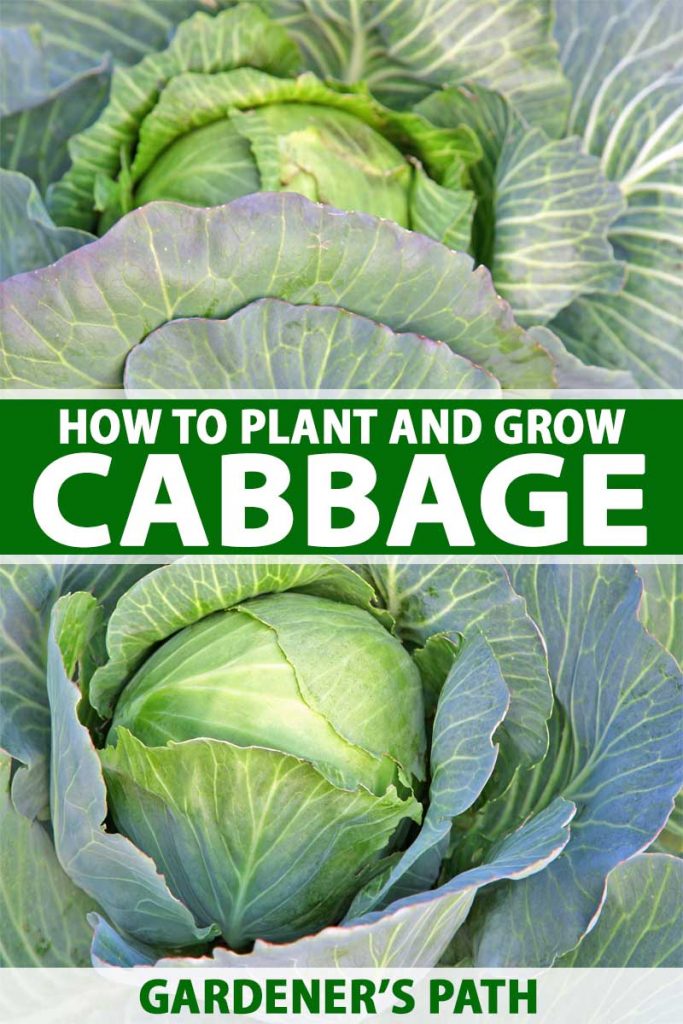
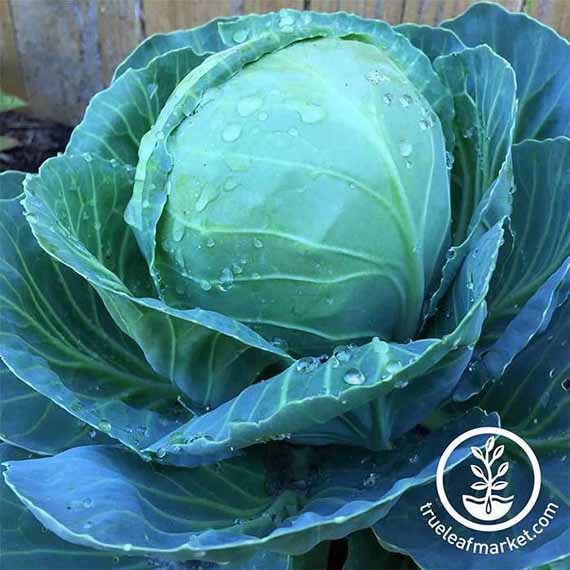
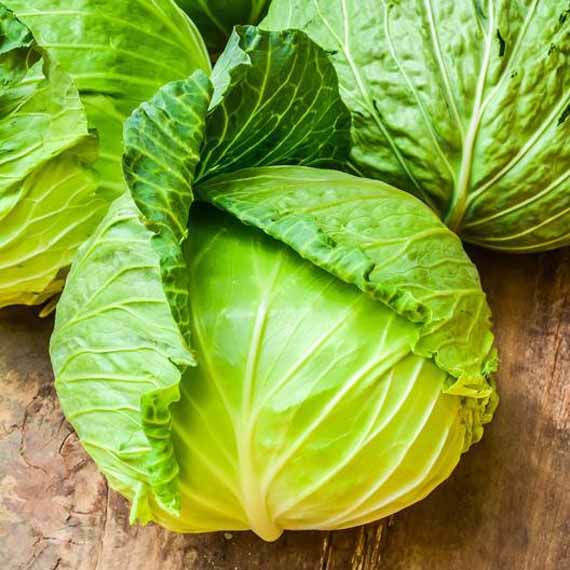

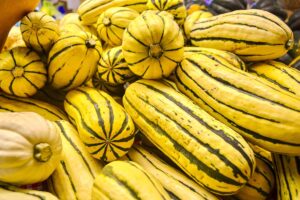

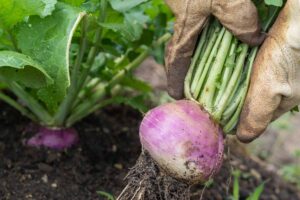
Hello Heather, my favourite thing about growing cabbage is eating it!
Thank you,
Richard -growerexperts.com
hi, this is Betty, I grow some cabbage in my garden, but these days it’s so cold here, and we even welcomed the first snow this year, and it’s 21F at night. After that, I found the back of my cabbage leaves, there is a crack along the main leaf vein, do you have any idea about it? and what’s the possible reason for it? Looking forward to your reply.
Betty
hi, this is betty again, and I attached the picture for my question. Thank you.
Hi Betty,
Looks like your cabbage might be starting to split, perhaps triggered by the stress of the change in weather. This can happen especially if you have had some rain followed by a dry period, or perhaps due to freezing and thawing temperatures. When the roots absorb water quickly it can cause leaf tissue to expand, creating pressure that pushes outward on the head. I would recommend harvesting your cabbage soon if it is ready. In the future, applying a thick layer of mulch might help ensure good drainage and protect the root from freezing and thawing. Good luck!
hi im new in the cabbage world what do i do ive my cabbage has split it grows like a tree please help.
Splitting is common when plants experience heavy rain followed by dry weather. The roots absorb too much moisture, and the increase in pressure from the water can cause heads to split. Over fertilization late in the growing season can also cause splitting. You can prevent splitting by keeping plants consistently moist, especially close to harvest time. Also be sure to mulch plants to help regulate soil moisture. Good luck with your cabbage plants!
Very good advice about cabbage. Thank you very much.
I will benefit from your knowledge cause I am a cabbage farmer in Kenya. I would like to start organic growing for food safety.
How can I get the disease resistant varieties here in Kenya? Please advise.
You are very welcome to visit me and my family. We are also environmentalists. We also have a tree nursery where we sell and also donate to the schools.
Hello Susan,
Thank you for your kind words.
You can try Kenya Seed Company, they have branches in Kitale and Eldoret. We are not affiliated with them in any way, but they may be able to help. Alternatively, Simlaw Seeds in Nairobi may have what you are looking for.
Hope this helps!
Heather, thank you so much for the comprehensive article. I was considering cabbage as a first crop in my attempt at a veg garden. However it seems a little daunting (so much looking after). No good for someone like me who has little energy…
Hello Cat!
I agree that something a bit easier to care for might be better at least at first. It’s hard to go wrong with kale or bush beans if you’re not used to gardening and want an easy-care plant. Tomatoes might work too, but of course, they require staking.
Best of luck and happy gardening!
CABBAGE GROWING
which seeds are good to grow and are resistant to pests and diseases
Hello Dakasi. We cover nine of the best cabbage varieties to grow in this article. If you’re looking for extra disease and pest resistance, look for a hybrid variety like ‘Katrina.’ Good luck!
What is the best month to plant cabbage in Harrismith?
Hello Mr B B Khumato.
You’ll want to start seeds indoors 8-10 weeks ahead of planting out. I believe that would be in June in your area. If you have the seedlings already plant them two to four weeks ahead of your average last frost date in late winter/early spring–so around mid-July in your area. Good luck!